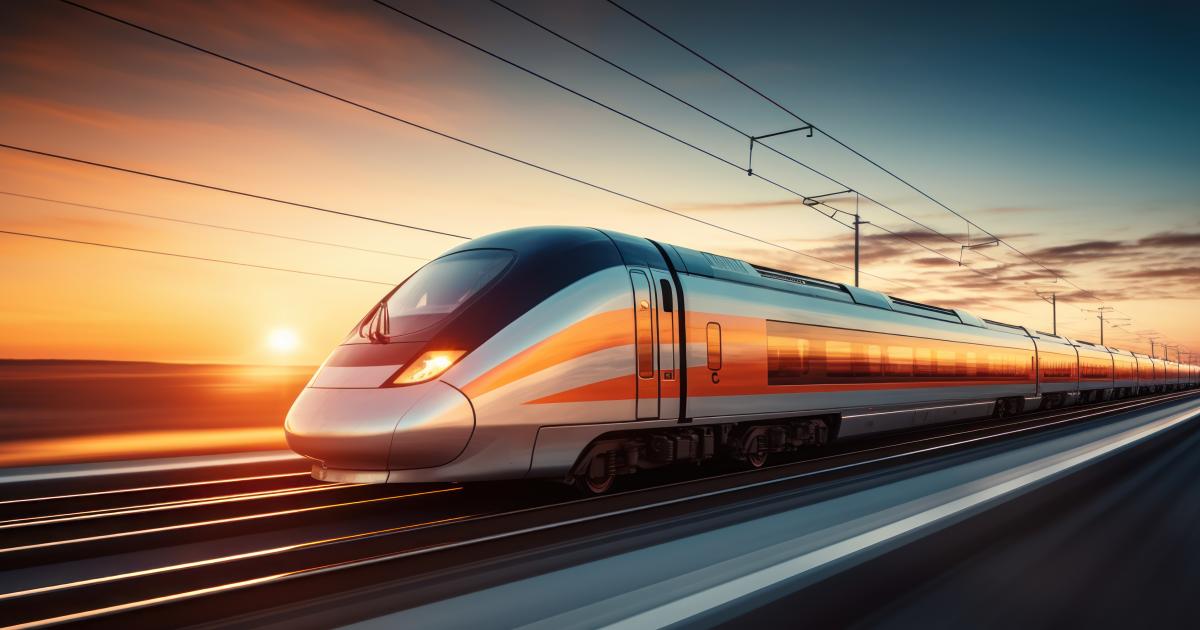
History of railroads in Spain: From the first lines to superfast trains
Take the train (not) just any train.... or railroads in Spain
Railroads in Spain have a long and fascinating history that begins in the 19th century. The first railroad, launched in 1848, connected Barcelona to Mataró. It was only 28 kilometers long, but it marked the beginning of the rapid development of the country's rail network.
Spain's railroads flourished in the 19th century. Major routes connected major cities such as Madrid, Barcelona, Valencia and Seville. The 1920s was the golden age of Spain's railroads, when the country boasted one of the most extensive rail networks in Europe.
Currently, Spain's high-speed rail (AVE) network is the largest in Europe and the second largest in the world, second only to China. Spain's AVE network covers more than 3,000 km of routes, making it one of the most extensive and modern in the world.
Rail Routes:
Spain has an extensive rail network that includes both regional and international lines. Among the most important routes is the AVE (Alta Velocidad Española) line, a super-fast railroad that connects Madrid to Barcelona, Seville, Valencia, Alicante and many other cities.
- Madrid - Barcelona route: This is one of the most famous AVE lines. The speed of trains on this route is up to 310 km/h, and the trip between the two cities takes just 2.5 hours.
- Madrid-Seville route: Launched in 1992, this route was the first superfast train line in Spain. Travel time is about 2.5 hours, and speeds reach 300 km/h.
- Madrid-Alicante route: This route is particularly popular with tourists, as it connects the Spanish capital with one of the most important seaside resorts. AVE trains cover the Madrid-Alicante route in about 2 hours and 20 minutes, reaching speeds of up to 300 km/h.
Spain's AVE trains are among the fastest in the world. The AVE Series 103 train, manufactured by Siemens, reaches a top speed of 350 km/h. AVE trains are equipped with advanced safety systems, such as ERTMS (European Rail Traffic Management System), which ensures optimal traffic control and minimizes the risk of accidents.
Types of Trains
AVE (Alta Velocidad Española): These are the most modern and fastest trains in Spain. They reach speeds of up to 310 km/h and offer comfortable travel conditions with a variety of amenities.
ALVIA: These trains connect the AVE high-speed rail network with conventional lines, offering speeds of up to 250 km/h. This allows travelers to quickly reach cities that are not on AVE's main routes.
TALGO: These are more conventional trains that are known for their comfort and innovative technical features, such as tilting carriages for faster cornering.
Cercanías: These are regional commuter trains that serve urban agglomerations such as Madrid and Barcelona. While they are not as fast as the AVE, they are reliable and well integrated into the urban transportation infrastructure.
Avant: high-speed medium-distance trains (up to 250 km/h), ideal for routes up to about 200-300 km. Popular on the Madrid-Toledo or Barcelona-Lleida routes, among others.
Euromed: high-speed trains that run along the Mediterranean coast (Barcelona-Valencia-Alicante). They can reach up to 250 km/h and are one of the most important transportation axes of the east coast.
Media Distancia (MD): medium-distance trains, connecting regional and provincial cities. Reaching speeds of up to about 160-200 km/h, they complement the AVE network.
Regional: classic regional trains, stopping in many smaller towns. Slower, but crucial for local transportation throughout Spain.
Thanks to continued development and innovation, travel in Spain is becoming faster, more comfortable and greener. Further investments are planned to expand the AVE network and modernize existing rail lines. The Spanish government and Spanish rail operator Renfe are focusing on green solutions to reduce CO2 emissions and promote sustainable transportation.







